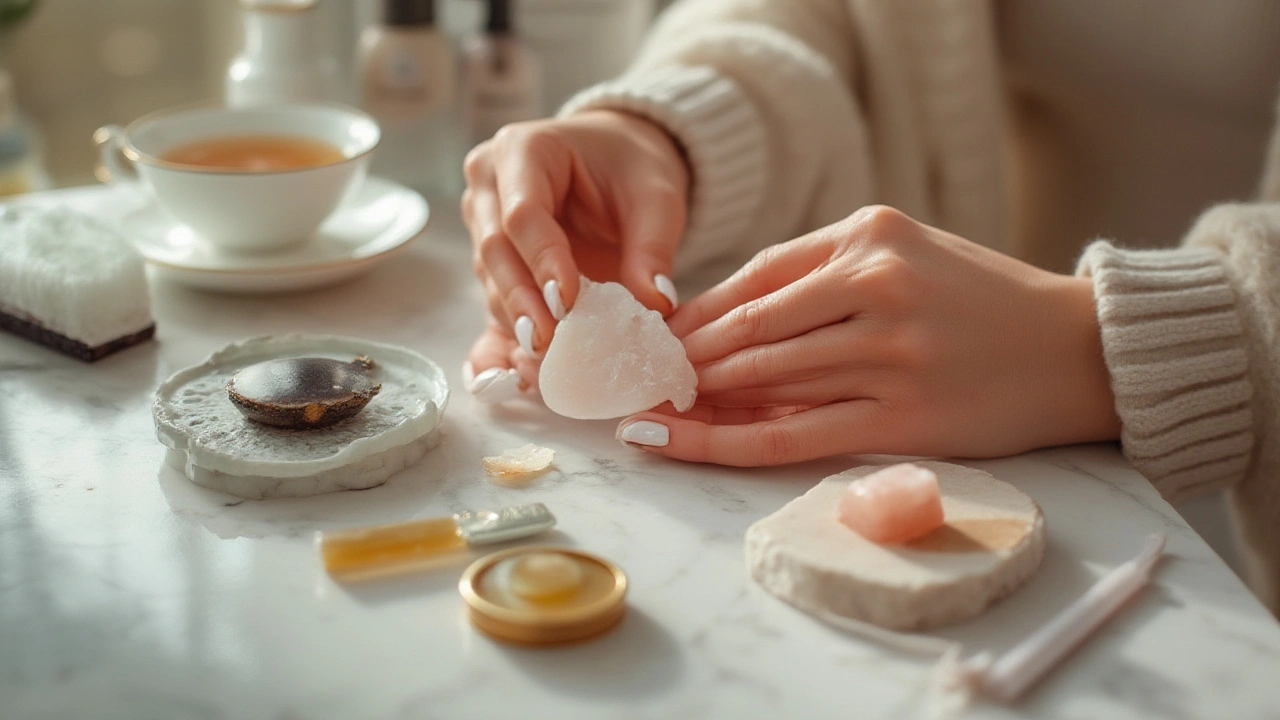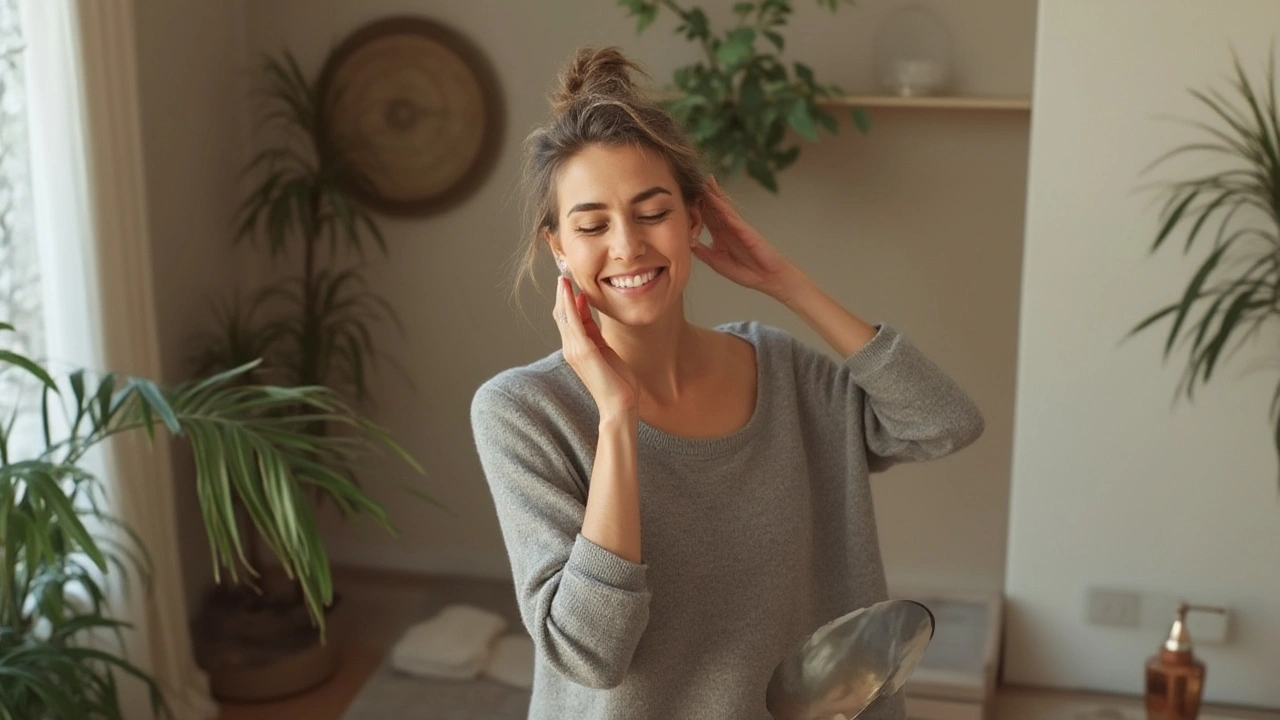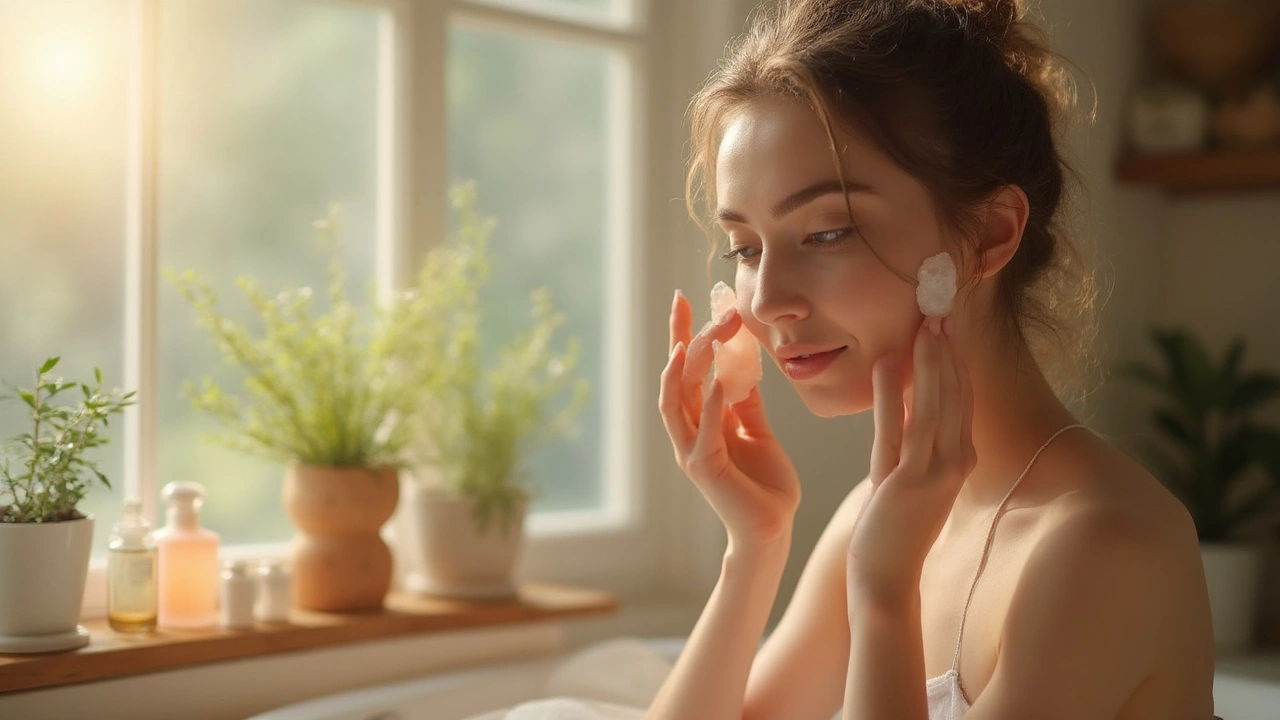Every now and then, a traditional practice slides quietly into the world of beauty, leaving skincare experts and casual enthusiasts obsessed. Gua sha is the tool behind that latest buzz. Imagine: a piece of crystal or jade, cool to the touch, gliding across your face, promising a firmer jawline, a brighter glow, and real relief from tension in places you didn’t realize you were holding it. That’s gua sha—simple, yet quietly extraordinary. People in East Asia have used this method for centuries, way before viral TikTok routines and Instagram skincare trends ever existed. But does it actually work? Or is it all just hype? Let’s look deeper at what makes gua sha more than another fad in the world of beauty.
The Origins and Science Behind Gua Sha
Gua sha comes from Traditional Chinese Medicine (TCM), where it was used for everything from muscle pain to fever. “Gua” means to scrape, and “sha” refers to the redness that often appears on the skin after the treatment—like a rush of energy released. Originally, healers used it mainly on the body, but the facial version (much gentler, don’t worry) has skyrocketed in popularity, thanks to its subtle yet powerful results.
Why scrape the skin at all? The theory behind gua sha is pretty simple: moving the tool across your skin with light pressure is believed to stimulate microcirculation. This helps increase blood flow and supports lymphatic drainage—the body's way of whisking away toxins. Scientific studies back up these benefits. For example, a 2017 study published in the journal Complementary Therapies in Medicine showed that gua sha can really boost circulation in treated areas by more than 400%. That’s not minor. More blood flow means more oxygen, better delivery of nutrients, and a visible difference in skin tone.
Facial gua sha is gentler than body scraping therapy. The stones, often made from rose quartz or jade, are shaped to hug your cheeks, jaw, and brow bone. These natural stones are a piece of history—with jade tools found buried in ancient tombs and texts referencing their use more than 700 years ago. That’s older than most beauty brands combined.
Modern beauty standards are finally catching up. Dermatologists don’t just write off gua sha as superstition—some now recommend it for facial puffiness or tension headaches. By promoting drainage, gua sha helps reduce visible puffiness. Think about how your face looks in the morning: swollen and tired after last night’s salty dinner or all-nighter. Gua sha pushes out that extra fluid, sculpting your face and waking up your skin.
| Benefit | Reported Improvement |
|---|---|
| Facial Puffiness | Up to 80% reduction with regular use |
| Circulation | 400% increase in treated areas (2017 study) |
| Jaw Tension | Significant reduction after 4 weeks (user surveys) |
| Radiance/Glow | Visible improvement in 2 weeks (beautician reports) |
| Fine Lines | Mild softening with consistent, long-term use |
What about safety? When performed correctly, facial gua sha is low risk. Bruising is rare if you use gentle strokes. Listen to your skin—if it hurts, lighten your touch. The key is technique, not force. A lot of mishaps happen when people watch a 20-second clip and press way too hard.
The great thing is, gua sha isn’t just for one skin type or age group. It’s ideal for people who get headaches, clench their jaw, or feel tightness in their face—whether you’re 21 or 61.

How to Use Gua Sha: Tips, Techniques, and Common Mistakes
Getting the hang of gua sha feels a bit awkward at first, since it goes against every “don’t pull your skin!” warning you’ve ever heard. Truth is, gentle pressure is your friend, not your enemy, here. The secret weapon: high-slip facial oil. Don’t even try this dry—your skin needs a cushion to prevent irritation.
- Choose Your Tool: Jade and rose quartz are the classics, but any smooth stone will work. Clean it with soap, rinse, and give it a swipe of alcohol now and then.
- Prep Your Skin: Start with a clean face. Apply a generous amount of facial oil or moisture serum—no dry patches allowed.
- Angle It Right: Hold the tool nearly flat against your face (about 15 degrees—think of it almost hugging your skin). Don’t poke with the edges.
- Work Outward and Upward: Always guide the tool toward your hairline or ear; never into the center of your face. Start with the neck, then work up to the jaw, cheeks, and forehead.
- Repeat Each Stroke: Go over each section 5–10 times in gentle, slow movements.
- Lymphatic Drainage: Focus extra time on under your chin and by your ears—that’s where your lymph nodes are most active.
- Finish With Cold: Rinse your tool and, if you’d like, store it in the fridge for a cooling effect next time around.
Avoid pressing too hard. Gua sha isn’t about force but flow. If your skin gets red, that’s okay—it’s temporary and harmless, but bruising means you went overboard. One smart tip: practice on your arm first to find the right pressure.
Missteps? Plenty of people skip using oil, which leads to skin irritation fast. Or they rush—real results need about five to ten minutes per session. Using a rough, chipped, or dirty tool is an invitation for breakouts. And if you have open wounds, acne cysts, or a rash, it’s best to skip gua sha on those areas entirely to avoid making things worse.
How often should you do gua sha? Most devotees see the best results with three to five sessions per week, but even once weekly offers benefits. Nighttime is great, especially if you’re a teeth grinder or stress-holder—gua sha is wildly soothing after a tense day.
Here’s something nobody tells you: using gua sha isn’t just about skin—it's also incredibly grounding. Taking those minutes to slow down and feel the cool stone glide over your face does wonders for your mood. It’s like a mini-meditation.

Beyond Beauty: The Surprising Perks of Gua Sha in Daily Life
Let’s go beyond the mirror for a second. The glowing skin and snatched cheeks are lovely, sure, but gua sha has a sneaky way of improving other parts of your daily routine. Stress and tension build up not only in your mind but in the tiny muscles under your skin. People who use gua sha regularly—especially along their jawline or forehead—often mention sleeping deeper and waking up with fewer headaches. The action triggers your parasympathetic nervous system, nudging your body into rest mode.
Jaw clenching is huge, especially since the pandemic put everyone’s anxiety levels on turbo mode. Dentists have noticed more patients with sore jaws and cracked teeth. Gua sha gives real, tactile relief for TMJ discomfort. A few careful passes over tight muscles can help loosen a clenched jaw faster than you might expect. Besides the jaw, the area near the brow also holds so much hidden tension, especially after hours at a screen. Working the tool along your brow bone can reduce those little tension headaches that creep in after a long day.
If you get sinus pressure—especially in allergy season—a gua sha massage right above the eyebrows and along the cheekbones helps open things up. Just remember not to use it if you have an active infection or fever.
What about long-term effects? Here’s where the regulars swear by it. Over months, gua sha might help soften early fine lines, especially around the eyes and mouth. It isn’t Botox-level potent (let’s be real), but studies show light, frequent massage techniques boost collagen production and elastin in the skin. This is partly why facialists love to blend gua sha into professional treatments. Dermatologist Dr. Shari Marchbein once explained in an interview that repeated micro-circulation jumps “help bring fresh oxygen and nutrients to the skin, supporting natural cell repair.”
Gua sha also has ties to traditional philosophies that value self-care and ritual. The time you take for yourself—smoothing, sweeping, pressing—brings attention to areas you usually ignore. This simple awareness can change your relationship with your skin entirely. Not every session has to be a full 10-minute routine, either. On busy mornings, even a quick 2-minute gua sha session along your jawline, cheeks, and brow will get your blood flowing and help banish the half-asleep puffiness.
- Pro Tip: For supercharged results, pair your gua sha massage with other lymphatic boosters. Try drinking a big glass of water beforehand, avoid salty food, and finish with a splash of cold water on your face.
- Store your gua sha stone in the fridge. A cold tool reduces swelling even faster and feels amazing after a hot day.
- Practice gentle consistency. Like flossing, a little every week beats occasional marathon sessions.
- Notice how you feel before and after. Gua sha isn’t only about transformation—it’s about checking in with yourself, noticing stress points, and sending a message to your body that you deserve care.
With all that stacked up, it’s hard not to see why gua sha is here to stay. It's simple enough for anyone, yet backed by both history and modern science. Whether you're chasing that sculpted jawline or just hunting for a moment of peace, this ancient tool fits right in your palm—and your self-care ritual.

